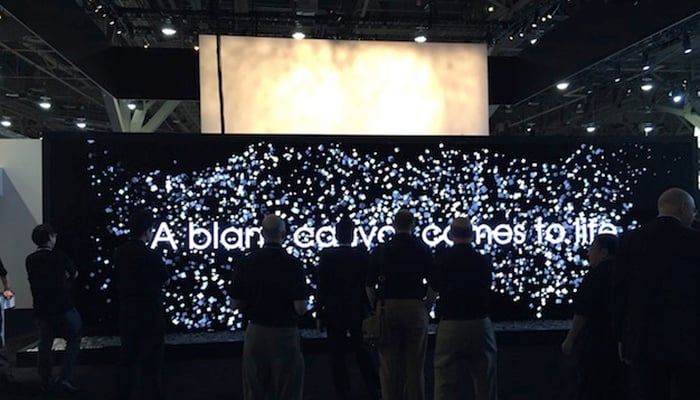

An efficiently designed and deployed audio-visual system can have a profound impact on your business. Streamlined internal processes and enhanced client and team collaboration are just two of the potential benefits.
However, entering the AV integration and design process blindly could have negative ramifications and impact the advantages a successful AV system can provide. In order to avoid disappointment and wasted money, it’s important for organization to be educated about AV systems and how to avoid potentially damaging mistakes.
Here are five ways poor AV integration and design can hurt your business.
It’s easy to get caught up in brand names and acronyms without truly understanding what each specific solution provides. This mentality can often lead to trying to find a do-it-all solution or committing to a product that doesn’t match your needs.
While a flexible “do-it-all” option like a reconfigurable Cave Automatic Virtual Environment that folds into different positions is a good fit for some organizations, it’s often more effective to invest in a specific solution to meet a particular need.
Too closely following a trend or getting caught up in the hype could lead to making an expensive decision before your organization is ready. In order to maximize the value of an AV system, go into the buying process with a clear understanding of what capabilities you need. From there, you can better narrow down the appropriate options for your organization.
Once you’ve decided on what type of AV system you’re going to integrate into your organization, you may need to anticipate the potential for changes or complications during the transition.
You can minimize potential issues associated with integration, like wasting staff time and capacity, by working with a professional av integrator. These experienced professionals can supplement your IT capabilities and help you achieve your goals through a structured and comprehensive process.
Entering the integration process with a solid understanding of your available budget and the costs involved in implementation will allow you to maximize the value of a system. However, it’s important to look at the full scope of costs involved in the audio visual design and integration process. For example, organizations may try to pack as much hardware as possible into their budget, but end up scrimping on essentials like control systems.
Another factor often overlooked is the ongoing cost of service and consumables, like lamps. Some users will purchase an AV system, but then avoid using it in order to extend the life of consumables. It’s important to enter the design and integration process with the understanding that support and parts will continue to cost money long after installation.
Effective AV implementation requires a master plan. Buying parts piecemeal and expanding over time without adequate knowledge of how the parts will work together can limit effectiveness and waste valuable budget.
Before diving into the process, thoughtfully consider your needs and how to approach implementation in a cohesive manner. Or, consult with a partner to better map out how to proceed with your chosen solution.
If you find yourself making one of these mistakes, you could not only waste budget but also valuable staff capacity and facility space. An ineffective system could also result in missed meetings and lost deals.
At IGI, we can help you avoid these costly mistakes and efficiently implement the right AV system for your organization’s needs. We’re an industry leader with 20 year’s experience in the complete integration of ultra-high resolution advanced visualization systems, including PowerWalls, CAVEs and Virtual Reality.
Contact us for a consultation to learn more about how your company can realize the value of an enhanced AV solution.